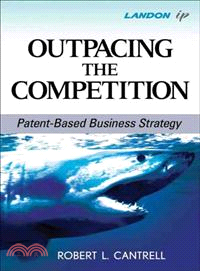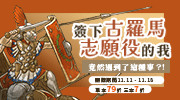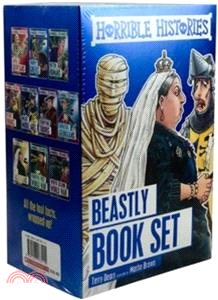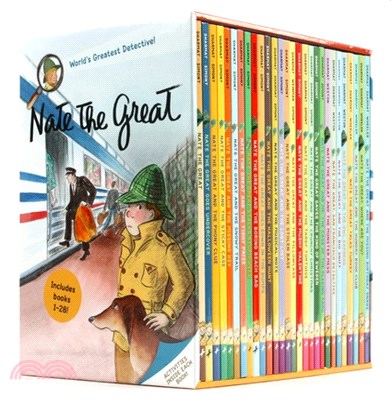Outpacing the Competition ─ Patent-Based Business Strategy
商品資訊
ISBN13:9780470390856
出版社:JOHN WILEY & SONS;LTD
作者:CANTRELL
出版日:2009/03/10
裝訂/頁數:精裝/343頁
規格:23.5cm*16.5cm*2.5cm (高/寬/厚)
定價
:NT$ 3686 元優惠價
:90 折 3317 元
絕版無法訂購
商品簡介
作者簡介
名人/編輯推薦
目次
相關商品
商品簡介
Praise for Outpacing the Competition Patent-Based Business Strategy
"Outpacing the Competition provides a useful IP management framework for rapidly evolving and inherently unpredictable R&D environments where companies are partners, customers, and competitors at the same time." –Marshall Phelps, Corporate Vice President for IP Policy & Strategy, Microsoft
"Robert Cantrell's book Outpacing the Competition: Patent-Based Business Strategy?should be read by?anyone?involved in the practice of litigating or licensing patent rights or policymakers responsible for patent issues. Mr. Cantrell provides a cogent approach for applying decisional methodology and game theory to enhance the utilization and understanding of patent rights."–Bradley J. Olson, Esq., patent attorney, Washington, DC
"Robert Cantrell makes a compelling case for using intellectual property as a core for building solid business strategy. He provides a unique and valuable perspective on competitive advantage, as delivered through patent-based business strategy. This is an excellent addition to anyone's business strategy arsenal." –Jeff Hovis, Managing Principal, Product Genesis, Innovation Genesis LLC
"Robert truly treats patents and related intellectual property as both a weapon and a shield to help the reader use patents to out-maneuver global competitors of all kinds—the low-cost producer, the high-end innovator, etc. CEOs, attorneys, business and engineering professionals and the like will enjoy the military imagery and flavor provided by Robert. Thanks for clarifying how critical it is to have an understanding of patents in running a truly competitive global business today." –José W. Jimenez, Esq., Chief Intellectual Property Officer,AMS Research Corporation
"Outpacing the Competition provides a useful IP management framework for rapidly evolving and inherently unpredictable R&D environments where companies are partners, customers, and competitors at the same time." –Marshall Phelps, Corporate Vice President for IP Policy & Strategy, Microsoft
"Robert Cantrell's book Outpacing the Competition: Patent-Based Business Strategy?should be read by?anyone?involved in the practice of litigating or licensing patent rights or policymakers responsible for patent issues. Mr. Cantrell provides a cogent approach for applying decisional methodology and game theory to enhance the utilization and understanding of patent rights."–Bradley J. Olson, Esq., patent attorney, Washington, DC
"Robert Cantrell makes a compelling case for using intellectual property as a core for building solid business strategy. He provides a unique and valuable perspective on competitive advantage, as delivered through patent-based business strategy. This is an excellent addition to anyone's business strategy arsenal." –Jeff Hovis, Managing Principal, Product Genesis, Innovation Genesis LLC
"Robert truly treats patents and related intellectual property as both a weapon and a shield to help the reader use patents to out-maneuver global competitors of all kinds—the low-cost producer, the high-end innovator, etc. CEOs, attorneys, business and engineering professionals and the like will enjoy the military imagery and flavor provided by Robert. Thanks for clarifying how critical it is to have an understanding of patents in running a truly competitive global business today." –José W. Jimenez, Esq., Chief Intellectual Property Officer,AMS Research Corporation
作者簡介
ROBERT L. CANTRELL is a professional strategist and Director of Consulting at Landon IP, Inc. He has managed multiple consulting and analytical engagements across a wide range of technology sectors that include the communications, electronics, medical devices, pharmaceuticals, energy, and consumer goods fields. For Landon IP customers, Mr. Cantrell manages patent analytical projects, innovation and IP strategy sessions, and advanced training courses. He is on the faculty of Patent Resources Group (PRG), the leading provider of advanced patent education to the legal and business communities. His core expertise in classical strategy has been proven to have wide applicability across many professional disciplines.
名人/編輯推薦
"…is a book written for business-people and attorneys who are charged with developing business opportunities using practical patent strategies. We highly recommend that you read Outpacing the Competition. You are sure to walk away with insights into business action that go well beyond just intellectual property strategies." (Patentbaristas.com, 7/23/09)
目次
Preface.
Orientation.
The Grant.
Jurisdictions and Costs.
Uncertainties.
Patent Claims.
18 Months of Secrecy.
Requirements to Obtain Patents.
Conclusion.
Chapter I. Introduction.
Strategy Defined.
Results.
Reasons for Unpredicted Results.
Patent Strategy Defined.
Value Capture.
The Nature of a Strategic Solution.
Opposites.
Strategic Inaction.
Strategy and Change.
The Perfect Strategy.
The “Good Enough” Strategy.
Strategic Risk.
Competitive Risk.
Chapter II. Decision Cycle.
The Question of Cost.
B. Invention Review List.
Four Rules of Patent Strategy.
The Definition of a Decision Cycle.
Chapter III. Assess.
Defining the Problem.
Problem Resolution.
Synthesis.
Identifying the Opposition.
Why Opposition Exists.
What Do We Do That Is “Evil”?
An Illustration of “Evilness”.
“Evilness” Exercise.
Why We Act.
What We Want.
Independent Action.
Cooperate or Compete.
Evaluating Resources for Cooperate or Compete Decisions.
Valuation and Return on Investment.
Application of the Patent Resource.
Centers of Excellence.
Federal Express as a Centers of Excellence Model.
Parallel Lines of Competition.
All Aspects of Power.
Standing on a Whale, Fishing for Minnows.
Dominant and Contested Positions.
Sanctuary and the Dominant Position.
Chapter Summary.
Chapter IV. Decide.
Defining the Goal.
Definition of 'B'.
Strategic Versus Technical Solutions.
Fundamental Competitive Strategy.
Fundamental Competitive Strategy, the Objective, and the Desired Result 'B'.
How to Be Proficient at Decision-Making.
Overwhelming Advantage.
Surprise.
Asymmetry.
Sanctuary.
Leveraging Conditions.
Developing the Situation.
Four Key Effects: Eliminate, Isolate, Interact, Negate.
Competitive Equilibrium and Disequilibrium.
Equilibrium.
Disequilibrium.
A Sample Cause and Effect Sequence.
Leveraging the Three Centers of Excellence when Crafting a Strategy.
Where We Cooperate and Compete.
Innovation.
Four Innovation Approaches (Solution Quadrants).
Solution Quadrants Illustration.
Skating Where the Puck Will Be.
Henry Ford.
Altshuller's Laws of Technical Evolution.
Altshuller and Ideality.
The Optimal.
Profiting From the Trend Toward the Ideal and the Optimal.
From Inventions to Solutions and the Technology Lifecycle.
Advancement.
The Sales Advantage.
Saleable Benefits.
Advantages.
A Degree of Separation.
Security.
The Primary Utility of a Patent.
The Ultimate Security Advantage.
The Ideal Patent.
A Counterintuitive Result.
Links Within Claims.
Links to Other Patents.
Links to Other Resources.
Parallel Lines of Competition and Security.
A Final Word on Asymmetry for Planning.
Reciprocal Response.
Patent Quality.
Drafting a Strong Patent.
Position Survivability.
The Dominant Patent Strategy.
High Tech Dominant Strategy: Stockpile.
Rule 1: Use patents to isolate.
Rule 2: Threaten to use patents to isolate.
Rule 3: Use patents to interact.
Rule 4: Leverage the possibility of interaction.
Pharmaceutical Dominant Strategy: Seek the Blockbuster.
Rule 1: Use patents to isolate.
Rule 2. Threaten to use patents to isolate.
Rule 3: Use patents to interact.
Rule 4: Leverage the possibility of interaction.
High Tech Versus Pharmaceutical.
Final Word on Decision.
Section Summary.
Chapter V. Act.
Acting on the Goal.
Acting Competitively.
Mentally Prepare to Adjust.
Categorize and Track Resources.
Four Operational Tenets.
Four Operational Tenets Defined.
Concentration of Effort.
Economy of Resources.
Freedom of Action.
Safety.
Summary on Operational Tenets.
Multi-Dimensional Considerations.
Balance.
Multi-Dimensional Considerations: Additional Notes.
Freedom of Action Enhancements.
How to Be Proficient at Operations.
A Case of Free Value.
Account for Change.
Tempo.
Decision Cycle and Tempo.
Col. John Boyd.
Factors of Importance re: Tempo.
Levels of Adaptation.
The Luck Factor.
Qualifying the Result.
Summary on Act.
Chapter VI. Connecting The Loop.
The Invention Review List.
Prior Art Search.
Invention Elicitation.
The Invention Audit.
Chapter VII. Two Imperatives.
Imperative 1: CEO Involvement.
The CEO and the Patent Line of Competition.
Bill Gates and Patents.
Imperative 2: Master the Fundamentals.
AWAKE Cycle™ From Fundamentals to Exceptional Strategy.
Chapter VIII. High-Tempo Patent Strategy.
Set Common Viewpoints.
Measure the Control of Technical Space.
Advanced Creativity Techniques.
Psychological Protections.
Accelerated Invention (TRIZ Example).
Conduct Invention/Patent Infiltration.
Necessary Adjustments.
High-Tempo Patent Strategy Advantages.
Chapter IX. Conclusion.
Appendix.
IP Strategy Boarding and Scenario Play.
Endnotes.
Orientation.
I. Introduction.
II. Decision Cycle.
III: Assess.
IV. Decide.
V. Act.
VII. Two Imperatives.
VIII. High-Tempo Patent Strategy.
IX. Conclusion.
Appendix 1. IP Strategy Boarding and Scenario Play.
Orientation.
The Grant.
Jurisdictions and Costs.
Uncertainties.
Patent Claims.
18 Months of Secrecy.
Requirements to Obtain Patents.
Conclusion.
Chapter I. Introduction.
Strategy Defined.
Results.
Reasons for Unpredicted Results.
Patent Strategy Defined.
Value Capture.
The Nature of a Strategic Solution.
Opposites.
Strategic Inaction.
Strategy and Change.
The Perfect Strategy.
The “Good Enough” Strategy.
Strategic Risk.
Competitive Risk.
Chapter II. Decision Cycle.
The Question of Cost.
B. Invention Review List.
Four Rules of Patent Strategy.
The Definition of a Decision Cycle.
Chapter III. Assess.
Defining the Problem.
Problem Resolution.
Synthesis.
Identifying the Opposition.
Why Opposition Exists.
What Do We Do That Is “Evil”?
An Illustration of “Evilness”.
“Evilness” Exercise.
Why We Act.
What We Want.
Independent Action.
Cooperate or Compete.
Evaluating Resources for Cooperate or Compete Decisions.
Valuation and Return on Investment.
Application of the Patent Resource.
Centers of Excellence.
Federal Express as a Centers of Excellence Model.
Parallel Lines of Competition.
All Aspects of Power.
Standing on a Whale, Fishing for Minnows.
Dominant and Contested Positions.
Sanctuary and the Dominant Position.
Chapter Summary.
Chapter IV. Decide.
Defining the Goal.
Definition of 'B'.
Strategic Versus Technical Solutions.
Fundamental Competitive Strategy.
Fundamental Competitive Strategy, the Objective, and the Desired Result 'B'.
How to Be Proficient at Decision-Making.
Overwhelming Advantage.
Surprise.
Asymmetry.
Sanctuary.
Leveraging Conditions.
Developing the Situation.
Four Key Effects: Eliminate, Isolate, Interact, Negate.
Competitive Equilibrium and Disequilibrium.
Equilibrium.
Disequilibrium.
A Sample Cause and Effect Sequence.
Leveraging the Three Centers of Excellence when Crafting a Strategy.
Where We Cooperate and Compete.
Innovation.
Four Innovation Approaches (Solution Quadrants).
Solution Quadrants Illustration.
Skating Where the Puck Will Be.
Henry Ford.
Altshuller's Laws of Technical Evolution.
Altshuller and Ideality.
The Optimal.
Profiting From the Trend Toward the Ideal and the Optimal.
From Inventions to Solutions and the Technology Lifecycle.
Advancement.
The Sales Advantage.
Saleable Benefits.
Advantages.
A Degree of Separation.
Security.
The Primary Utility of a Patent.
The Ultimate Security Advantage.
The Ideal Patent.
A Counterintuitive Result.
Links Within Claims.
Links to Other Patents.
Links to Other Resources.
Parallel Lines of Competition and Security.
A Final Word on Asymmetry for Planning.
Reciprocal Response.
Patent Quality.
Drafting a Strong Patent.
Position Survivability.
The Dominant Patent Strategy.
High Tech Dominant Strategy: Stockpile.
Rule 1: Use patents to isolate.
Rule 2: Threaten to use patents to isolate.
Rule 3: Use patents to interact.
Rule 4: Leverage the possibility of interaction.
Pharmaceutical Dominant Strategy: Seek the Blockbuster.
Rule 1: Use patents to isolate.
Rule 2. Threaten to use patents to isolate.
Rule 3: Use patents to interact.
Rule 4: Leverage the possibility of interaction.
High Tech Versus Pharmaceutical.
Final Word on Decision.
Section Summary.
Chapter V. Act.
Acting on the Goal.
Acting Competitively.
Mentally Prepare to Adjust.
Categorize and Track Resources.
Four Operational Tenets.
Four Operational Tenets Defined.
Concentration of Effort.
Economy of Resources.
Freedom of Action.
Safety.
Summary on Operational Tenets.
Multi-Dimensional Considerations.
Balance.
Multi-Dimensional Considerations: Additional Notes.
Freedom of Action Enhancements.
How to Be Proficient at Operations.
A Case of Free Value.
Account for Change.
Tempo.
Decision Cycle and Tempo.
Col. John Boyd.
Factors of Importance re: Tempo.
Levels of Adaptation.
The Luck Factor.
Qualifying the Result.
Summary on Act.
Chapter VI. Connecting The Loop.
The Invention Review List.
Prior Art Search.
Invention Elicitation.
The Invention Audit.
Chapter VII. Two Imperatives.
Imperative 1: CEO Involvement.
The CEO and the Patent Line of Competition.
Bill Gates and Patents.
Imperative 2: Master the Fundamentals.
AWAKE Cycle™ From Fundamentals to Exceptional Strategy.
Chapter VIII. High-Tempo Patent Strategy.
Set Common Viewpoints.
Measure the Control of Technical Space.
Advanced Creativity Techniques.
Psychological Protections.
Accelerated Invention (TRIZ Example).
Conduct Invention/Patent Infiltration.
Necessary Adjustments.
High-Tempo Patent Strategy Advantages.
Chapter IX. Conclusion.
Appendix.
IP Strategy Boarding and Scenario Play.
Endnotes.
Orientation.
I. Introduction.
II. Decision Cycle.
III: Assess.
IV. Decide.
V. Act.
VII. Two Imperatives.
VIII. High-Tempo Patent Strategy.
IX. Conclusion.
Appendix 1. IP Strategy Boarding and Scenario Play.
主題書展
更多
主題書展
更多書展今日66折
您曾經瀏覽過的商品
購物須知
外文書商品之書封,為出版社提供之樣本。實際出貨商品,以出版社所提供之現有版本為主。部份書籍,因出版社供應狀況特殊,匯率將依實際狀況做調整。
無庫存之商品,在您完成訂單程序之後,將以空運的方式為你下單調貨。為了縮短等待的時間,建議您將外文書與其他商品分開下單,以獲得最快的取貨速度,平均調貨時間為1~2個月。
為了保護您的權益,「三民網路書店」提供會員七日商品鑑賞期(收到商品為起始日)。
若要辦理退貨,請在商品鑑賞期內寄回,且商品必須是全新狀態與完整包裝(商品、附件、發票、隨貨贈品等)否則恕不接受退貨。
























